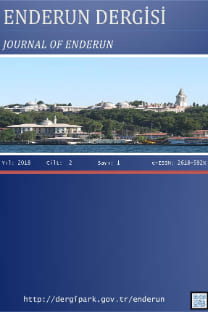DOĞU AVRUPA ÜLKELERİNİN TOPLAM FAKTÖR VERİMLİLİĞİNİN MALMQUIST İNDEKSİ ANALİZİ
Malmquist indeksi, Toplam Faktör Verimliliğinin hesaplanması için kullanımaktadır. Ele alınan Doğu Avrupa bölgesinde bulunan Türkiye’nin de dâhil olduğu 25 farklı ülkenin verileri Penn World Table 9,1’dan elde edilerek 1999-2017 dönemi için analizi amaçlanmaktadır. Ülkeler arasındaki verimlilik farklılıkları ve genel durum hakkında bir analiz amaçlanmaktadır. Bu analiz sonucu ülkelerin teknolojik gelişiminin tespitinin yanında politika önerileride çalışmada yer alacaktır. Ele alınan ülkeler özelinde elde edilen teknik etkinlik değerlerinin dağılımının dengeli olduğu görülmektedir. Bu durum veri seti teknik etkinlik değerinin 0,583 olmasına neden olmaktadır. Ülkelerin maliyet etkinliği ortalamasına bakıldığında ise ortalama olarak 0,207 olarak bulunmuştur. Ayrıca ülkeler ortalamasında ele alınan tahsis etkinliğinin teknik etkinlikten az maliyet etkinliğinden yüksektir. Bahsedilen rakamın 0,393 olarak bulunmuştur.
Anahtar Kelimeler:
Doğu Avrupa Ülkeleri, Toplam Faktör Verimliliği, Malmquist İndeksi
Malmquist Index Analysis of Total Factor Productivity of Eastern European Countries
The Malmquist index is used to calculate the Total Factor Productivity. The data of 25 different countries, including Turkey, located in the Eastern European region under consideration are obtained from Penn World Table 9.1 and it is aimed to analyze them for the period 1999-2017. An analysis is aimed at deciphering the differences in productivity between countries and the general situation. The result of this analysis will be included in the study to determine the technological development of the countries as well as to make policy recommendations. It is seen that the distribution of the technical efficiency values obtained in the countries considered is balanced. This causes the data set technical efficiency value to be 0.583. When the cost effectiveness average of the countries was examined, it was found to be 0.207 on average. In addition, the allocation efficiency considered in the average of the countries is higher than the technical efficiency and less than the cost effectiveness. The mentioned figure was found to be 0.393.
___
- AKAL Z., ‘‘İşletmelere performans ölçüm ve denetimi, çok yönlü performans göstergeleri’’, Ankara, MPM yayınları No 473,1998.
- AKALIN Güneri ,‘‘Kamu ekonomisi’’,Ankara,Ankara SBF yayını-No.554,1986.
- BELKA, M., E. Nowotny, P. Samecki, D. Ritzberger-Grünwald (eds.) “Boosting European Competitiveness: The Role of CESEE Countries”, Cheltenham 2016, Edward Elgar Publishing.
- CHARNES A., W. W. Cooper, A. Y. Lewin, ve L. M. Seiford, "Data Envelopment Analysis: Theory, Methodology And Applications", Kluwer Academic PuMishers, Boston, 1993.
- COELLI T. J ,., D. S. P. Rao,. ve G. E .Battese,. , “An Introduction to Efficiency ve Productivity Analysis”, Boston: Kluwer Academic Publishers,1998.
- DELİKTAŞ Ertuğrul , ‘‘Türkiye özel sektör imalat sanayinde etkinlik ve toplam faktör verimliliği analizi’’, ODTÜ Gelişme Dergisi, 29 (3-4), 2002.
- FARE R. , S. Grosskopf, ve C. Lovell, "Production functions", Cambridge University Press, Cambridge, 1994.
- FARREL M.J., ‘‘The measurement of productivite efficiency’ , Journal of the royal statistical society, vol.120,1957, s.253-290.
- FARRELL M. ve M.,Fieldhouse, “Estimating efficient production functions under increasing returns to scale”, Journal of Royal Statistical Society, Series A, 2,1962, 252-267.
- FRİED H.O. Fried, C. Lovell, ve S. S. Schmidt, "The Measurement Of Productive Efficiency: Techniques And Applications", Oxford University Press, New York, 1993.
- FURKOVÁ, A., SURMANOVÁ, K., 2011. Stochastic Frontier Analysis of Regional Competitiveness, Quantitative Methods in Economics, Vol. XII, No. 1, pp. 67–76.
- GALGÓCZİ, B. “Why central and eastern Europe needs a pay rise”, ETUI Working Paper No. 2017.01, european trade union institute, 2017, available at http://www.fesbp.hu/common/pdf/2017_Galgoczi_Why_central_and_eastern_Europe_needs_a_pay_rise_EN.pdf.
- GANLEY J. A. ve J. S. Cubbin, “Public Sector Efficiency Measurement”, Elsevier Science Publisher, Amsterdam, 1992. KARACABEY Ali Argun, "Veri Zarflama Analizi", Ankara Üniversitesi Siyasal Bilgiler Fakültesi Tartışma Metinleri, No. 33, 2001, s. 1.
- KORNAİ, J. “Transformational Recession: The Main Causes”, Journal of Comparative Economics, Vol. 19, No. 1, 1994, pp. 39-63.
- HOSSAİN M., K., KAMİL AAA, BATEN MA, MUSTAFA A., 2012 Stochastic Frontier Approach and Data Envelopment Analysis to Total Factor Productivity and Efficiency Measurement of Bangladeshi Rice. PLoS ONE 7(10): e46081.
- doi:10.1371/journal.pone.0046081 SEIFORD L. M. , "Data Envelopment Analysis: The evohıtion of îhe state of the art (1978-1995)", Journal Of Producthity Analysis, 1996, Vol. 7, s. 99-138.
- SEIFORD L. M. , "Data Envelopment Analysis: The evohıtion of îhe state of the art (1978-1995)", Journal Of Producthity Analysis, 1996, Vol. 7, s. 99-138.
- SUN, X., Loh, L., (2019) Sustainability Governance in China: An Analysis of Regional Ecological Efficiency, Sustainability, doi:10.3390/su11071958.
- TARIM Armağan , ‘‘Veri zarflama analizi matematiksel programlama tabanlı göreli etkinlik ölçüm yaklaşımı’’, Sayıştay yayınları, 2001, s. 14.
- ZHENG J., Zhang H., 1 Xing, Z., Re-Examining Regional Total-Factor Water Efficiency and Its Determinants in China: A Parametric Distance Function Approach, Water. 10. 1286. 10.3390/w10101286.
- ISSN: 2618-592X
- Yayın Aralığı: Yılda 2 Sayı
- Başlangıç: 2017
- Yayıncı: Cihan USTA
Sayıdaki Diğer Makaleler
KAYSERİ HÜRMETÇİ SAZLIĞI’NIN MEVCUT DURUMU VE TURİZME KONU OLMA YETERLİLİĞİ
KÜRESELLEŞME, GÖÇMENLİK VE SIĞINMACILIK ÜZERİNE
PANDEMİ İLE MÜCADELEDE EPİSTEMİK PATERNALİZM
DOĞU AVRUPA ÜLKELERİNİN TOPLAM FAKTÖR VERİMLİLİĞİNİN MALMQUIST İNDEKSİ ANALİZİ
GÖSTERİŞÇİ TÜKETİMİ ETKİLEYEN FAKTÖRLER
VİDEO YARDIMCI HAKEM UYGULAMASININ (VAR) TÜRK FUTBOLU ÜZERİNDEKİ ETKİLERİNİN İNCELENMESİ
